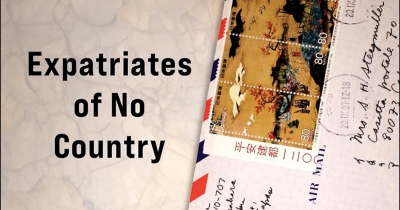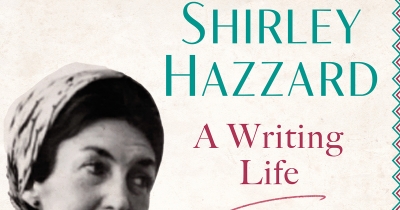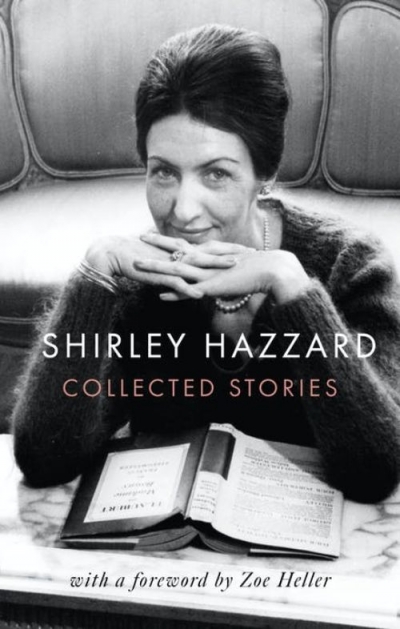Shirley Hazzard
Expatriates of No Country: The letters of Shirley Hazzard and Donald Keene edited by Brigitta Olubas
Biographers nearly always rejoice to find a bundle of letters. If both sides of a correspondence have survived, it doubles the pleasure. At its best, an exchange that was maintained over a long period will illuminate personality, time, and place. Love letters are probably the most highly prized. Whether or not the lovers have the gift of words, their closeness in a relationship brings a sense of reality. Readers of some self-revealing intimate letters may feel like intruders, uninvited watchers at a private theatre for which they didn’t buy a ticket.
... (read more)In this week’s ABR Podcast, Peter Rose reviews Hazzard and Harrower: The letters, edited by Brigitta Olubas and Susan Wyndham. The correspondence between writers Shirley Hazzard and Elizabeth Harrower ran from 1966 to 2008 and, in its unedited form, amounted to 400,000 words. Editors Susan Wyndham Brigitta Olubas have trimmed it down: ‘For the time being,’ says Peter Rose, ‘we must make do with this entertaining and not insubstantial entrée.’ Listen to Peter Rose’s ‘Flies in the Nirvana’: An illuminating and sisterly correspondence’, published in the June issue of ABR.
... (read more)Hazzard and Harrower: The letters edited by Brigitta Olubas and Susan Wyndham
‘Everyone allows that the talent of writing agreeable letters is peculiarly female.’ So said Jane Austen in Northanger Abbey. Even allowing for Regency hyperbole, there is some truth in the sally. We think of the inimitable letters of Emily Dickinson, who once wrote to a succinct correspondent: ‘It were dearer had you protracted it, but the Sparrow must not propound his crumb.’ In 2001, Gregory Kratzmann edited A Steady Stream of Correspondence: Selected Letters of Gwen Harwood, 1943-1995. Anyone who ever received a letter or postcard from Harwood – surely our finest letter writer – knows what an event that was. She was nonpareil: witty, astringent, frank, irrepressible. Now we have this welcome collection of letters written by Elizabeth Harrower and Shirley Hazzard (unalphabetised on the cover, in a possible concession to the expatriate Hazzard’s international fame).
... (read more)Shirley Hazzard is widely regarded as one of Australia’s finest novelists, even though she published only four novels during her long lifetime. Now, Professor Brigitta Olubas from the University of New South Wales has written the first major literary biography of the writer in Shirley Hazzard: A writing life (Virago/Farrar, Straus and Giroux). In this week’s ABR podcast, ABR Editor Peter Rose interviews Professor Olubas about her study of the ‘complex, alluring, peripatetic artist’.
... (read more)Shirley Hazzard challenged Auden’s line that poetry makes nothing happen. In her case, she said, poetry made everything happen. It was because she learned Italian as a teenager in order to read Leopardi in the original that she was sent, aged twenty-six, by the United Nations, to Italy, where she wrote ‘Harold’, the story about the awkward young poet that was published in the New Yorker in 1960, after which ‘everything changed’.
... (read more)The Collected Stories of Shirley Hazzard by Shirley Hazzard
When Shirley Hazzard was invited to give the 1984 Boyer Lectures, it was an astonishing break in tradition. Her twenty-three predecessors included only one woman, Dame Roma Mitchell, a supreme court justice who was later governor of South Australia. Except for architect and writer Robin Boyd, and poet and Bulletin editor Douglas Stewart, Hazzard was the only creative artist on the list. All her predecessors were well known for their public contributions to Australian life.
... (read more)The ABR Elizabeth Jolley Short Story Prize – one of the country’s major short story prizes – is once again open. Generous support from ABR Patron Ian Dickson has ...
... (read more)We Need Silence to Find Out What We Think: Selected Essays by Shirley Hazzard
In her speech as the winner of the 2003 National Book Award, Shirley Hazzard said, 'We should do our best by the language. We mustn't torture it; we mustn't diminish it. We have to love it, nurture it, and enjoy it.'
Reading Hazzard, as she is variously represented in this collection, is to encounter a writer who has done her 'best by the language' and, in t ...
Shirley Hazzard: New Critical Essays edited by Brigitta Olubas
Shirley Hazzard is probably the most elegantly polished writer in the Australian canon: her novels and stories use traditional structures with great assurance, she writes from a thoughtful moral position, she is outspokenly engaged with the fine and the less fine elements of the Australia she once lived in, and she can be dry and funny. She spent most of her life in ...
Shirley Hazzard: Literary Expatriate and Cosmopolitan Humanist by Brigitta Olubas
The cover of Shirley Hazzard’s The Great Fire shows a vast and terrible conflagration. Flames reach high into the sky, devouring the air and seeming to set the wide river alight. In the distance, an eerily familiar pair of ghostly towers rises above the smoke. In the foreground, tiny human figures move around as a boat sets off towards the fire, perhaps in some desperate attempt at rescue. The painting is The Burning of the Houses of Parliament by J.M.W. Turner. Shirley Hazzard chose this image herself for the cover of the novel, which won both the Miles Franklin and National Book Awards in 2003.
... (read more)









